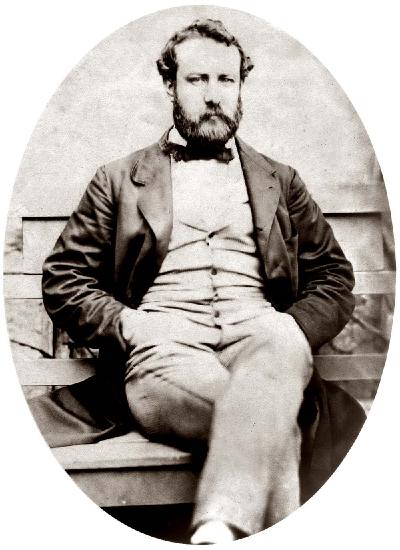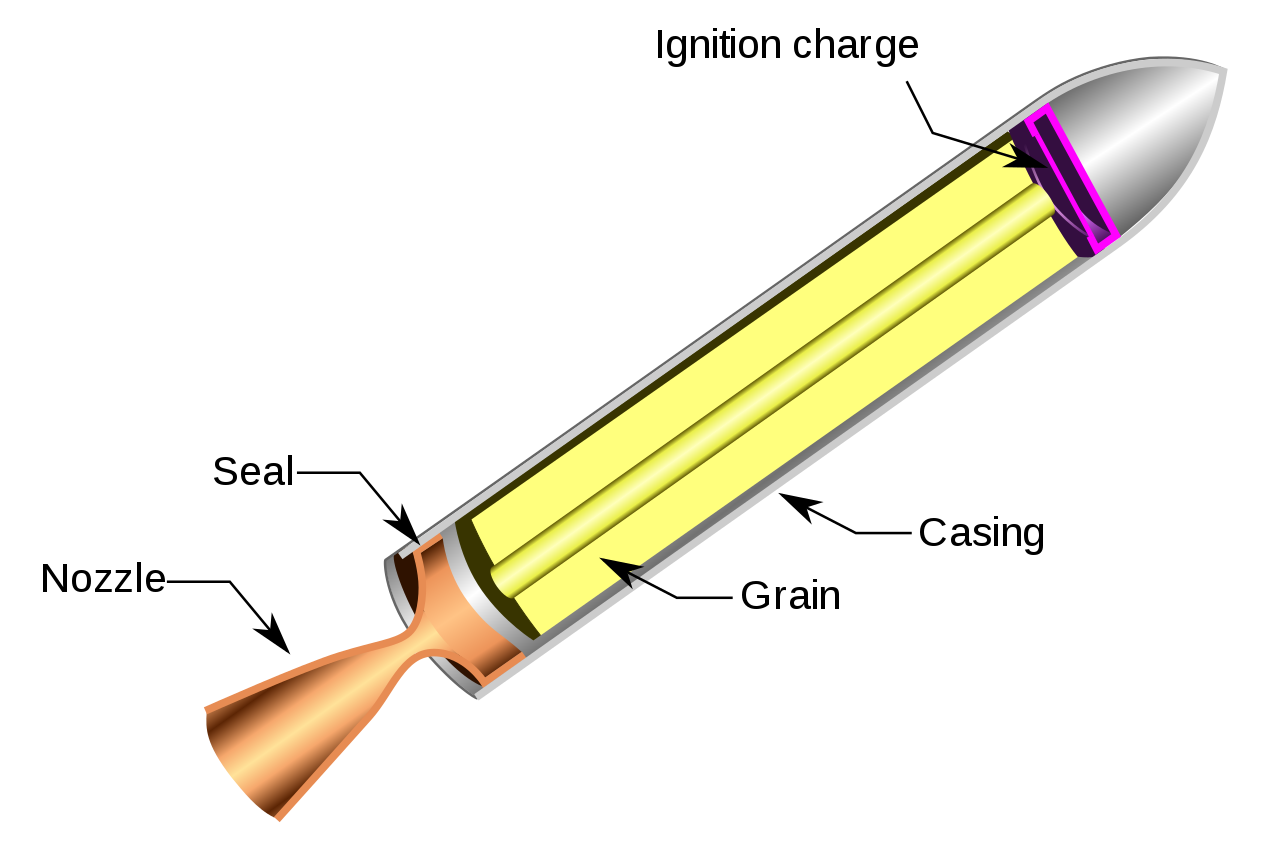7.1: Rocketry Basics
( \newcommand{\kernel}{\mathrm{null}\,}\)
Rockets work according to Newton’s Laws of Motion. Recall from Chapter 3 that Newton’s Laws state as follows:
- First law: In an inertial frame of reference, an object either remains at rest or continues to move at a constant velocity, unless acted upon by a force.
- Second law: In an inertial frame of reference, the vector sum of the forces F on an object is equal to the mass m of that object multiplied by the acceleration a of the object: F = ma.
- Third law: When one body exerts a force on a second body, the second body simultaneously exerts a force equal in magnitude and opposite in direction on the first body.
 https://www.nasa.gov/audience/foreducators/rocketry/relatedsites/basics-of-rocketry.html
https://www.nasa.gov/audience/foreducators/rocketry/relatedsites/basics-of-rocketry.html
You can easily model a rocket by blowing up a balloon and hold the nozzle closed. The air inside the balloon exerts pressure throughout the entire interior of the balloon. So long as the nozzle is closed, the internal forces balance each other, and the balloon will not accelerate. However, if you release the balloon and allow air to escape the nozzle. Now those internal forces are no longer balanced. The air opposite the nozzle still exerts a force on the inside of the balloon but that force is not canceled out by a force in the opposite direction as the air escapes through the nozzle. This creates an action-reaction force pair and a net force in the direction opposite of the nozzle. Thus, the balloon flies though the air.
Rockets work by burning a fuel that produces a rapidly expanding gas. As with a balloon, the gas exerts a force on all sides of the rocket, except the nozzle, where the gas can escape. Thus, the force in the direction of the nose cone is not canceled out by a force on the nozzle, as there is nothing there for it push against. Therefore, the rocket rises.
Newton noted that any projectile travels in a curved path as it travels horizontally and down toward the ground simultaneously. Examining projectiles fired from canons, he noted that, the more powerful the canon, the further the projectile traveled and the greater the radius of its curve. He postulated that if he had powerful enough canon, he could launch a projectile on a curved path with a radius greater than the radius of the Earth. Such a projectile would be in orbit around the Earth. In a sense, if would continue to “fall” toward the Earth but its horizontal motion would keep it moving fast enough so that it continued to “miss” the Earth. An orbiting satellite is in free fall, forever falling toward the Earth and forever missing it. It could return to Earth only if a drag force slowed its forward motion down enough to cause it to fall down to Earth.

Jules Verne, in his classic story, From Earth to the Moon, imagined a group of scientists fired themselves out of a canon to launch themselves to the Moon. As exciting as the idea of a giant canon firing people into space, in practice, the unfortunate astronauts would be crushed to jelly by the acceleration before their capsule excited the barrel of the canon. Hence, why we use rockets, which can accelerate us up to orbital velocity in a more gradual manner, without crushing its passengers.

To reach orbit, a rocket must accelerate to orbital velocity, which is given by the following formula:

Where:
G = the universal gravitational constant, G = 6.673x10-11 N∙m2/kg2
mE = the mass of the Earth (5.98 x 1024 kg)
r = the distance from the object to the center of the Earth
For Earth, the orbital velocity comes out to about 8 km/s.
Rockets can maximize efficiency by launching near the equator on an eastward trajectory. This adds the Earth’s rotational velocity (465 m/s at the equator, 410 m/s in Florida) to the rocket’s velocity. This why American rockets launch from Florida as it is the closest part of the continental United States to the equator.
Orbital velocity pulls a satellite into orbit. To leave Earth entirely and travel to other planets, our craft must reach escape velocity. This is given by the following formula:

For Earth, the escape velocity comes out to 11.2 km/s.
Rockets can be powered by either solid or liquid fuel rockets. In order to work in space, rockets must also carry an oxidizer to ignite the fuel. As they burn fuel and oxidizer, rockets lose mass as gases escape from the nozzle. Rocket scientists must take this change in mass into their account when calculating a rocket’s thrust and trajectory.

Liquid rockets inject both the fuel and the oxidizer (liquid oxygen) into the thrust chamber and ignite them. Because the fuel and oxidizer are liquid, these rockets have shifting centers of mass as they launch. This makes liquid fuel rockets vulnerable to “slosh” that may throw it off balance unless they are properly stabilized. Robert Goddard developed the first liquid fuel rockets in the 1930s.

In contrast, solid fuel rockets date back to ancient China, making them the oldest form of rockets. Modern solid fuel rockets combine both the fuel and the oxidizer in a rubbery mixture. These rockets have low cost to thrust ratio. However, solid fuel rockets cannot be turned off. Once ignited, they burn until all the fuel is consumed. As a result, they make cheap boosters to launch payloads into space, but they cannot be used for maneuvering or course corrections as these require being able to fire rockets in short, controlled bursts.




